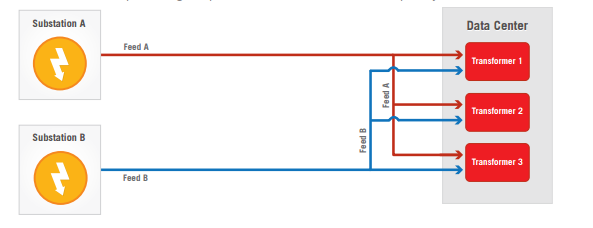In 2007, a truck crashed into a utility pole at a Rackspace data center in Dallas, causing power outages and downtime for several major websites. In 2010, a squirrel chewed through power lines near Yahoo’s data center in Santa Clara, taking down half the data center. Apparently these “frying squirrel” incidents are somewhat common in the data center industry. Back in February of this year, a car crashed into a utility pole near our Texas 1 data center in Austin, causing a transformer to blow and the loss of one of our power feeds. However, because our facility is fully-redundant with dual power feeds, we experienced no power outage or downtime at Texas 1.
When people think of power outages at data centers, squirrels and vehicle accidents rarely come to mind. These are good examples of how true dual power feeds prevent unexpected outages in addition to those that we know will happen at some point, such as outages from major storms. Due to the inevitability of power outages, the importance of colocation at fully-redundant data centers with underground power feeds can’t be emphasized enough.
Many data centers claim they have dual power feeds when in reality, there is only one feed from one power substation. These data centers have multiple transformers, as most do, with lines running from the transformers to the data center. These may be falsely promoted as dual power feeds. If a utility pole goes down, these data centers would lose all electric power to their facilities.
Some other data centers have dual feeds running from one or two substations to an automatic or manual throw over switch (ATO/MTO). These switches have to be operating properly for power to be effectively switched over from one feed to another. ATO/MTO switches are owned by utility companies, not data centers, and there is no maintenance conducted on these switches to ensure they stay in working condition. Problems with these switches are never discovered until the moment they are needed. Data centers that rely on ATO/MTO switches have a single point of failure, and they are not fully redundant facilities.

Our Texas 1 data center has dual power feeds (one of which is subterranean) running from two independent substations to each of our five transformers, which are located inside our building. We do not rely on an ATO/MTO switch or a single substation. Even if, against all odds, we were to lose power from both substations at once, we have diesel generators, which are also protected indoors, to keep our data center up and running.
Read more about data centers and the different types of power infrastructures in our white paper, The Truth about Data Center Power Structure, or contact us to learn more.
